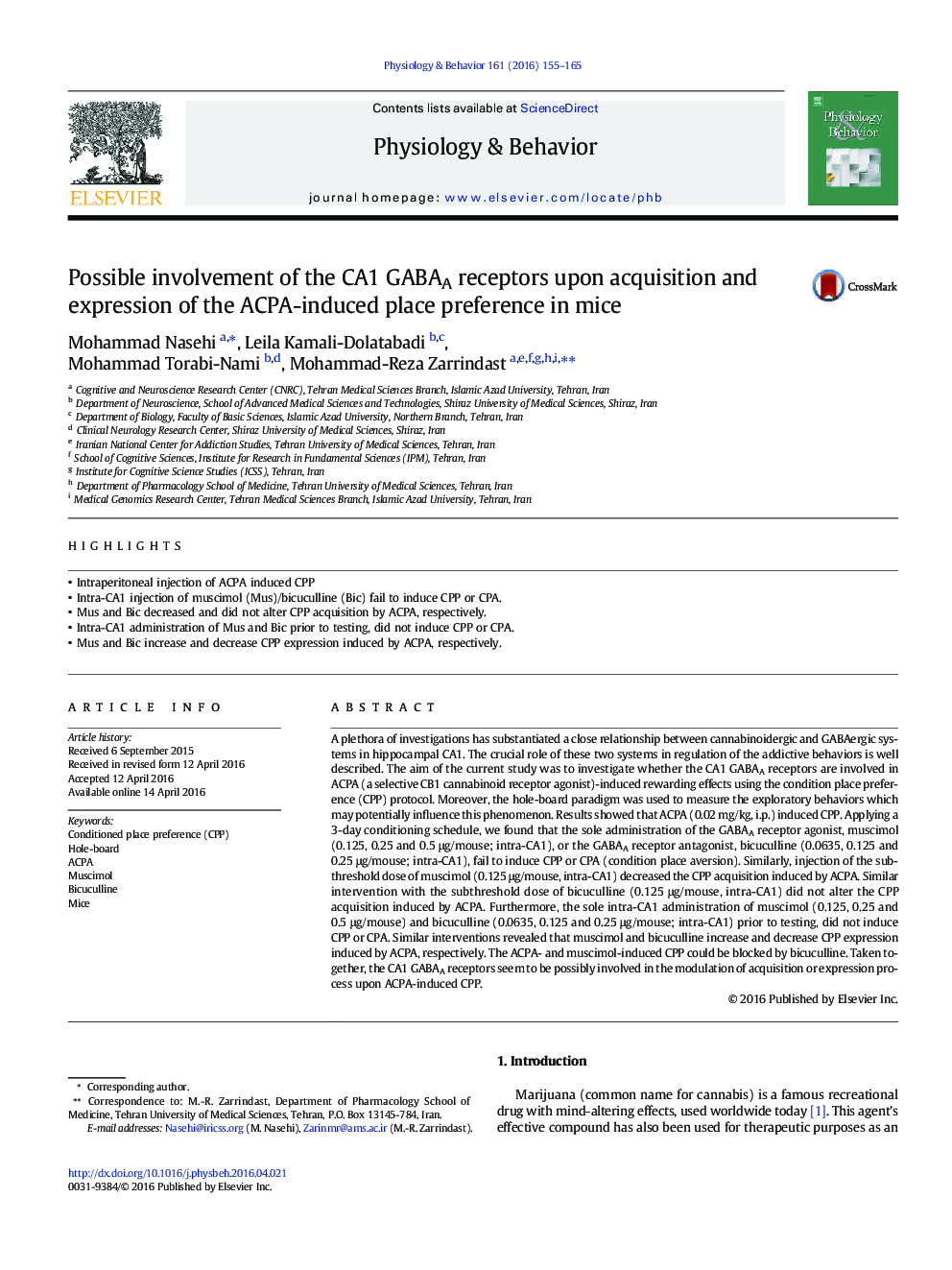| کد مقاله | کد نشریه | سال انتشار | مقاله انگلیسی | نسخه تمام متن |
|---|---|---|---|---|
| 2843886 | 1571157 | 2016 | 11 صفحه PDF | دانلود رایگان |

• Intraperitoneal injection of ACPA induced CPP
• Intra-CA1 injection of muscimol (Mus)/bicuculline (Bic) fail to induce CPP or CPA.
• Mus and Bic decreased and did not alter CPP acquisition by ACPA, respectively.
• Intra-CA1 administration of Mus and Bic prior to testing, did not induce CPP or CPA.
• Mus and Bic increase and decrease CPP expression induced by ACPA, respectively.
A plethora of investigations has substantiated a close relationship between cannabinoidergic and GABAergic systems in hippocampal CA1. The crucial role of these two systems in regulation of the addictive behaviors is well described. The aim of the current study was to investigate whether the CA1 GABAA receptors are involved in ACPA (a selective CB1 cannabinoid receptor agonist)-induced rewarding effects using the condition place preference (CPP) protocol. Moreover, the hole-board paradigm was used to measure the exploratory behaviors which may potentially influence this phenomenon. Results showed that ACPA (0.02 mg/kg, i.p.) induced CPP. Applying a 3-day conditioning schedule, we found that the sole administration of the GABAA receptor agonist, muscimol (0.125, 0.25 and 0.5 μg/mouse; intra-CA1), or the GABAA receptor antagonist, bicuculline (0.0635, 0.125 and 0.25 μg/mouse; intra-CA1), fail to induce CPP or CPA (condition place aversion). Similarly, injection of the subthreshold dose of muscimol (0.125 μg/mouse, intra-CA1) decreased the CPP acquisition induced by ACPA. Similar intervention with the subthreshold dose of bicuculline (0.125 μg/mouse, intra-CA1) did not alter the CPP acquisition induced by ACPA. Furthermore, the sole intra-CA1 administration of muscimol (0.125, 0.25 and 0.5 μg/mouse) and bicuculline (0.0635, 0.125 and 0.25 μg/mouse; intra-CA1) prior to testing, did not induce CPP or CPA. Similar interventions revealed that muscimol and bicuculline increase and decrease CPP expression induced by ACPA, respectively. The ACPA- and muscimol-induced CPP could be blocked by bicuculline. Taken together, the CA1 GABAA receptors seem to be possibly involved in the modulation of acquisition or expression process upon ACPA-induced CPP.
Journal: Physiology & Behavior - Volume 161, 1 July 2016, Pages 155–165